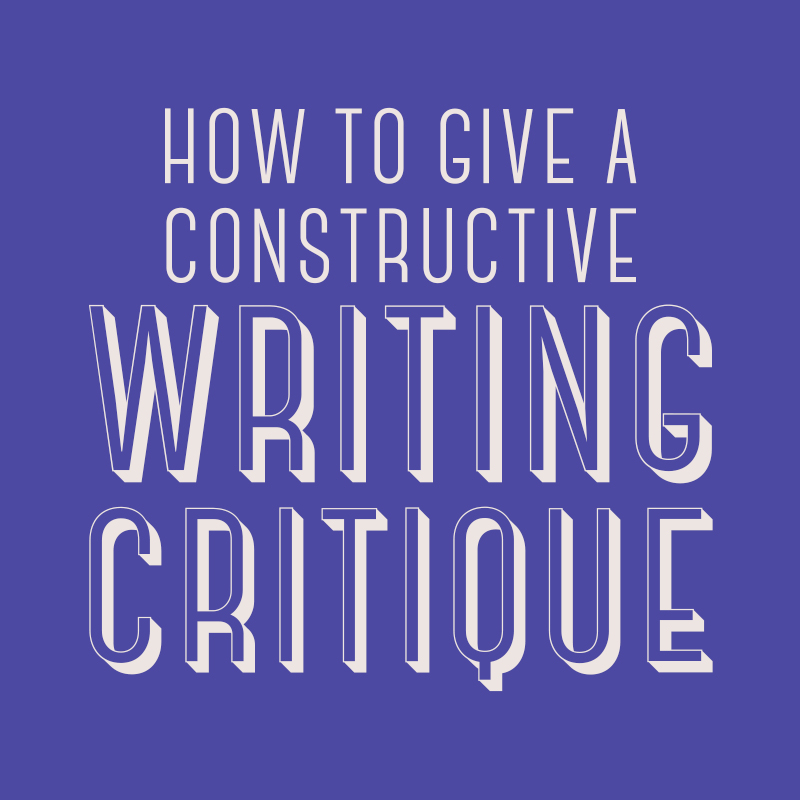Whether you’re in a workshop group, volunteering as a beta reader, or helping out a fellow writer as a critique partner, the art of giving a constructive writing critique is very important. All writers need input on their writing, and your feedback will be most effective if you give some thought to how you frame and deliver it.
Throughout my undergraduate and graduate degree, workshops were a vital part of my education. I’ve also developed my practice through six years or so as a beta reader/critique partner for numerous writers. Below are the three ways I’ve learned to best give feedback that will encourage, challenge, and motivate the writers I help.
1. Start Positive
Begin on a good note. A spoonful of sugar helps the medicine go down, and all that. Try to highlight your biggest praises from the start. It is important to remind your writer that you want to help them, not cut them down.
Do not lie for the sake of flattery. No matter how rough the story is, you can always find something to be positive about (even if it’s just, “Your character names are great!”). When you make yourself look, it gets easier to find tidbits to praise. Normally, you actually find a lot!
In the body of your feedback, you’ll be separating critiques (call them “concerns”) into sections (see below). At the end, try to wrap it up with another positive spin. Reiterate to your writer that they can do it! By using this sandwich method, it will be easier for the writer to digest the heart of the critique.
2. Keep Perspective
Remember always that you are on the writer’s side. Your job as feedback-giver is to take what she has and make it stronger. Your job is not to find every tiny error (unless you’re a paid proofreader) or to rewrite her story the way you want it to be.
This is why I normally try to let my critiques sit for at least 24 hours before I send them. Sometimes in the heat of marking up a story, it’s easy to get super knick-picky and critical. Make sure you take a step back, remind yourself that you’re here to help, and practice your diplomacy.
My golden rule for this: Whenever I offer a criticism, I have to offer a solution.
If I cannot give the writer a suggestion for how to fix the problem I’ve brought to her attention, I think long and hard about whether the problem is serious enough to bring up (because it may well just be me yapping to hear my own voice). Sometimes it is still serious, and I’ll say it anyway. Most of the times, this rule keeps me from drawing attention to hyper-small issues so that I can focus on the larger, more helpful bits.
This technique also will make your critique easier on the writer. Instead of giving them a list of a thousand things that are wrong and dropping the mic, you are giving them gentle guidelines for how they might find their way out. They may not take your advice, which is completely fine, but your advice can help prompt them into action rather than leave them in the pit.
Here is a purely hypothetical example:
“Your narrative voice: I’m concerned that your use of adjectives might be distracting to some readers. Generally it’s recommended to choose stronger nouns, which will capture the image you’re trying to convey more vividly. An example might be: ‘I quickly and nervously walked to the blue-striped, old door with the broken rusted latch.’ Which could be stronger more like: ‘I ran to the blue door and grabbed the latch. Rust caked on my palm as I pushed.’ Or something.”
(Also, note in the example I did not just say, “Your adjectives are a problem, and you should fix that.” I gave a specific example of a time the adjectives got in the way, and then a specific example of how this hypothetical writer might cut them down.)
3. Organize Your Concerns
Break your concerns into sections. I’ve found this an immensely helpful way to organize my own thoughts. It also makes me be intentional about what big things need to be addressed, and what might not be as important for this critique. In turn, by being organized your writer will have an easier time digesting the information.
An example of how to do this:
- Characters
- Main Character arc
- Secondary Character(s) arcs
- Redshirts
- Plot
- Themes
- Places the pace dragged
- Plotholes
- Worldbuilding
- Setting
- Ways to improve
- Writing quality
- Use of flashbacks
- Character voice
- Lengthy descriptions
A note on line edits…
Even if you are doing line edits for a writer, it’s beneficial to give a little synopsis of your critique at the end of the piece. Also, don’t forget to point out anything you can praise as you read (“Oh, great twist to that scene!” or “The conflict here is good!”). Don’t fixate on the negative things. Being nice where nice is deserved will help the critiques go down easier.
Do you have any techniques for giving a constructive writing critique? Leave a comment below!


















